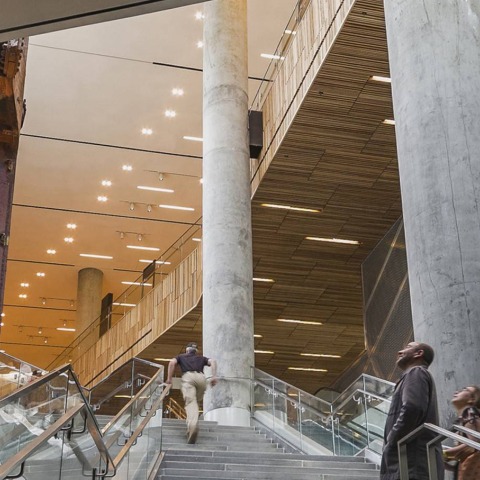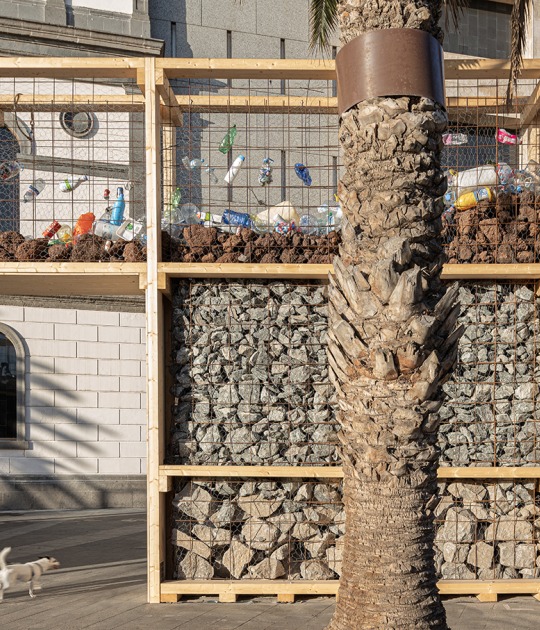The memorial museum at the World Trade Centre site in New York, in memory of those killed during the September 11 terrorist attacks, the National September 11 Memorial Museum is the only built structure on the memorial plaza –the site of the destroyed World Trade Centre.
In 2004 the architecture office Snøhetta was commissioned to design this cultural facility located between the two memorial fountains designed by architect Michael Arad and landscape architect Peter Walker. The pavilion is the only one place where emerges above ground the underground museum design by New York firm Davis Brody Bond.
Conceived as "a bridge between two worlds", the faceted pavilion provides a entrance to the museum's subterranean exhibition spaces.
The 911 Memorial Museum: A Conversation with the Architects, below.
National September 11 Memorial Museum & Pavilion. Description of the design by Snøhetta
On May 15, 2014, President Obama will be present for the dedication of the National September 11 Memorial Museum & Pavilion at the World Trade Centre site. The pavilion and museum will open to the public for the first time on May 21, 2014.
In 2004, Snøhetta was commissioned to design the only building on the memorial plaza. In the years since, the program has changed several times, however it has remained a cultural facility dedicated to visitor comfort and orientation. The design for the building embodies a careful reaction to the horizontal character of the memorial plaza's design, while also providing the area with a lively organic form that allows the visitor to imagine the site and city in a broader sense.
Snøhetta's design approach has always been characterised by an exploration of context. The WTC Memorial site carries with it both the power of its history and a new hope for the future. It is a place that conveys the memories and dreams of people around the world who are affected by its presence without forgetting its intimate connection to the people of New York.
With its low, horizontal form and its uplifting geometry the pavilion acts as a bridge between two worlds - between the memorial and the museum, the above and below ground, the light and dark, between collective and individual experiences. Inclined, reflective and transparent surfaces encourage people to walk up close, touch and gaze into the building.
Within the atrium there will stand two structural columns rescued from the original towers. Although removed from their former location and function, they mark the site with their own original aesthetic gesture.
Once inside, visitors look out through the pavilion's atrium to see others peer in, and begin a physical and mental transition in the journey from above to below ground.
The Pavilion's jewel-like, striped facade was developed in collaboration with the client to allow the building to have a strong resonance for the visitor as well as providing visual and architectural connection to the surrounding urban environment. The flat plane of the Memorial Plaza is pierced by the glass atrium of the pavilion, which allows visitors to enter the below-grade museum and bring with them sunlight from above.
The alternating reflective treatment of the facade will mirror the changing seasons, revealing the Pavilion's differing qualities throughout the year.
The pavilion follows the memorial's sustainability design guidelines. As a result, the pavilion is on target to receive a LEED rating of Gold. The pavilion features a number of sustainable features including optimised minimal energy performance, daylight and views, water efficiency, wastewater re-use, low emitting and locally sources materials and fabricators wherever possible.






























